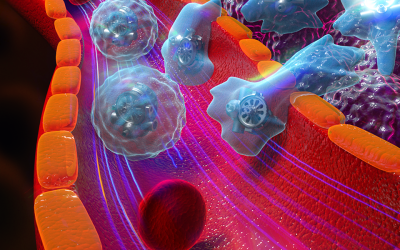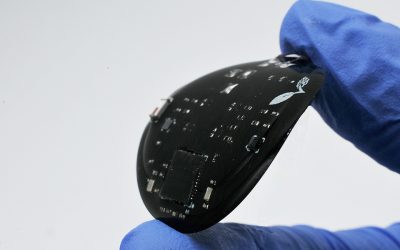Fullerenes are spherical cage-like molecules consisting entirely of sp2 carbon atoms. They form another type of allotrope besides diamond and graphite for carbon. Since their discovery in 1985, they have attracted broad interest because of their special structures and versatile chemical reactivities. Because fullerenes hardly dissolve in water, increasing their solubility in water is usually necessary before applying fullerenes in aqueous conditions, e.g., biological systems. Fullerenols are one of the most important water-soluble derivatives of fullerenes. Recent studies have shown that fullerenols have intriguing biomedical functions. For example, they can protect nervous systems by scavenging the free radicals in the living organisms. Thus, they may be used to treat neurodegenerative diseases such as Parkinson’s and Alzheimer’s diseases. Fullerenols derived from Gd@C82 exhibit high anti-tumor activitiesand negligible toxicities and are under development as a new generation of anti-tumor drugs. However, because of their amorphous nature, the structures of fullerenols are yet to be explicitly characterized, which severely hinders their research and design towards biomedical applications.
Recently, researchers from the Institute of High Energy Physics, Chinese Academy of Sciences and other collaborative research institutions have proposed a precision structural model for fullerenols and made an important step forward for the study of this class of materials. They have characterized the species of oxygen-containing groups and the origins of radical-anion properties for fullerenols, using a combined computational and experimental approach.
Because fullerenols are commonly synthesized in alkali, oxidizing conditions, in order to characterize the species of oxygen-containing groups survivable in the synthetic conditions, they have calculated the acid dissociation constants (pKa) and redox potentials (ε) for various hydroxylated fullerene structures. These calculations have predicted the most probableoxygen-containing groups of fullerenols to be 6,6-vicinal diol, 5,6-hemiacetal, isolated hydroxyl and epoxy groups. The researchers have also synthesized 13C-labeled fullerenols and measured their NMR and IR spectra to confirm the predictions.
Using the stability rule of sp2 nanocarbons, which they previously established, the researchers have proposed a new structural model for fullerenols. The new model reasonably explains the IR spectra of fullerenols observed in experiments. It further points out that the experimentally-observed radical-anion property of fullerenols should originate from the triphenylmethyl-like local structures of fullerenols. In this triphenylmethyl-like local structure, there exist two neutral six-membered aromatic rings and one negatively-charged five-membered aromatic ring. In addition, the researchers have also explained the reasons why different hydroxylated fullerenes have different acidities and reducibilities. The results will help understanding of chemical structures and properties of fullerenols, and also towards biomedical applications.
















